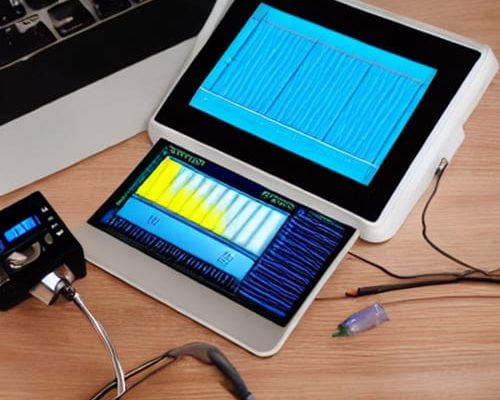Principles of Power Quality Work in Peru:
The quality of the power supply has a direct bearing on the fundamental operation and performance of the equipment linked to the distribution network. It is assumed that the equipment will perform as intended and that its lifespan will be about equivalent to the indicated value.

Likewise, it is expected that the network’s stability is adequate to prevent issues such as poor output or functionality loss. In truth, the power system is plagued by several power quality difficulties. These interruptions in power quality, regardless of length, might cause device damage. Therefore, maintaining power quality is essential to prevent equipment failure.
This blog will examine the research necessary for measuring electricity quality and dependability. Following this, several power quality systems, and techniques for measuring both the effect and the control are examined. In contrast to dependability, which is concerned with prolonged power outages, the effects of power quality disruptions are not immediately apparent. In certain instances, however, the consequence of a power quality interruption is immediate owing to equipment damage and/or a delay in the process. This is particularly true for lulls, interruptions, and transients. In other instances, the effects of the power quality disturbance may not be immediately evident. Equipment degradation is one instance. In this circumstance, equipment deterioration remains unchecked for decades. In other instances, power quality concerns will result in extra losses that are absorbed as part of the cost of doing business and are, thus, overlooked.

The Effects of Low-Quality Electricity:
Direct economic impacts include:
- Loss of manufacturing
- There are expenses involved with restarting a procedure.
- Equipment damage and repair costs
- More breakdowns and delays
- Concerns about human safety and health
- Financial expenditures incurred owing to contract violation
- Monetary sanctions for environmental infractions
- As a result of the interruption, utility expenses rose.
Indirect economic implications include:
- The costs spent by a business due to delayed revenue or income.
- The monetary cost of declining market share
- The price of reestablishing brand value
Socioeconomic repercussions include:
- The rise in temperature within a structure may impede performance, health, or safety.
- An individual injury or worry
- Failure to recognize the disruption in power quality may result in an electrical danger.


Understanding the Sources of Poor Power Quality:
Voltage, frequency, and waveform of a power supply system are evaluated to establish its power quality. However, many things impact power quality. This blog discusses the following concerns with electricity quality:
- Voltage stability
- Voltage imbalance
- Harmonics of current
- Voltage flickering or fluctuation
- Voltage dips (sometimes referred to as sags) and interruptions
Other phenomena such as swells, transients, inter harmonics, and noise have gotten less attention due to their infrequency of occurrence.
1. Voltage stability
Long-term sustained voltage magnitudes (minutes or hours) correlate to steady-state voltage magnitudes. The primary effects of sustained high voltage (overvoltage) or low voltage (undervoltage) include equipment failure, increased energy consumption, and probable system dysfunction.
2. Voltage imbalance
Unbalanced voltage is commonly related with increased losses, especially in induction and three-phase motors.
- This results in reverse torque and bearing wear.
- Additional heating of the stator and rotor
- The current capacity of installation cables decreases.
- The neutral conductor incurs extra losses.
- In cables, more energy is lost.
3. Harmonics of current
All energy consumers create and inject harmonic currents into the power system. Harmonic currents are alternating current currents whose fundamental frequency is multiples of 50 hertz. Computers, variable speed drives (VSD), and discharge lamps are the most prevalent non-linear electrical equipment that emit harmonic currents. Harmonic currents are particularly damaging to both the installation and the power distribution network. Damaged components, damaged installation parts, component loading, inefficient use of the installation’s current carrying capability, shortened component lifespan, and ineffective operation of protective components are some of the impacts of harmonics.
4. Voltage flickering or fluctuation
An envelope modulation of a voltage waveform is flicker. It produces cyclic fluctuations in the light intensity of incandescent lighting sources. Some individuals may experience discomfort, reduced productivity, migraines, and, in rare situations, seizures due to this periodic change in light output.
5. Voltage dips
During voltage sags and interruptions, the majority of equipment is not harmed; nevertheless, lengthier disruptions commonly result in output loss owing to equipment tripping. A common observation is that the cost of a lengthy interruption is not proportional to its length, but rather follows a logarithmic curve. According to experts, the following elements have a significant impact on the expense of a lengthy interruption:
- In the manufacturing business, for instance, the difference in cost between a one-second, one-minute, and one-hour disruption is considered to be little.
- The day, time, and location where it takes place (weekday, weekend, daytime, nighttime)
AEMO calculates the value of customer reliability (VCR) to evaluate the economic effect of outages on all consumers. Despite the fact that these numbers largely reflect the customers’ desire to pay to avoid a disruption, it is anticipated that this willingness to pay is significantly correlated with the actual cost. According to these estimations, a one-second outage costs around 20 percent less than an hour-long interruption.
How Might Power Quality Problems Be Mitigated?
CareLabs offers a number of services to discover and evaluate power quality concerns. Included are:
- Load Flow Analysis: This analysis is conducted based on the operational circumstances. It estimates the magnitudes of power flow, voltage levels, power factor, and system losses.
- This is the technique of discovering and predicting probable harmonic issues using computer algorithms. In addition, reduction strategies are provided based on the findings.
- Analysis of Surges and Transients Identifies the causes of transients and surges.
- This analysis will follow the voltage’s short-term decrease and climb, as well as its value and course.
- Reactive Power Study: This analysis will find the optimal reactive power at the distribution and load ends.
- This project would measure and synchronize captive power in order to satisfy demand while reducing energy surcharges and fuel use.
CareLabs analyses and evaluates power quality using the ETAP (Electrical Transient Analysis Program) – Electrical Transient Analysis Program software. It is the finest program for running calculations and simulations for all electrical system components, assuring the safety of the equipment. We offer power quality analysis in all major cities, including Lima, Arequipa, Trujillo, and Chiclayo CareLabs is committed to providing the highest quality service to enhance the quality and dependability of your electrical system. Contact us immediately to schedule an examination of your electricity quality or to obtain a price!



